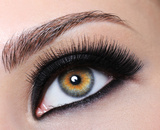Aromatherapy – Essential Oils
Ancient History Essential oils are the oldest and some of the most powerful therapeutic agents known. They have enjoyed a millennium-long history of use in healing through out the ancient world. Writings from ancient China, India, Egypt and even early Biblical references were made to essential oils and how they were used. But it wasn’t until the 1920’s that the French perfumer named Rene Gattfosse coined the term “aromatherapy”.Aromatherapy Essential oils are well known for their lovely effects on the beauty of skin and hair. They can also have profoundly uplifting effects on our moods and feelings; also known as aromachology. But not so well know is the effects essential oils have in enhancing and maintaining a state of homeostasis or wellness.
Aromatherapy is a word you see often, so often in fact that the meaning has become very ambiguous. When you hear the word what do you think? Softly glowing scented candles, a frothy, foamy bath or a richly perfumed lotion? It can be used that way but there is so much more depth of power then just a lovely scent, * if * you use high quality therapeutic grade essential oils.Delicate and Volatile Essential oils are concentrated volatile liquids made by steam distilling plant material, flowers, stems, bark, fruit or roots. But it doesn’t begin there. It begins in the fields. The oils are in the plants to provide protection and healing for the plant. The oils are very delicate and complex, comprised of several hundred chemical compounds. So many things can affect the quality of the finished oil. The amount of rain and sunshine, the quality of the soil, the time of harvest, the time between harvest and distillation, the quality of water used for the distillation, the amount of pressure and heat, and the length of the distillation process.Adulteration However it is expensive to grow the plants organically, it is even more expensive to distill the plants slowly with low heat and pressure, so some manufactures use high pressure and heat and have a shorter distillation time, which can destroy and even burn some of the delicate compounds in the oils. But they make more money off of an inferior product. Another thing some manufacturers and distributors do is to add synthetic chemicals to the pure oils, to create more volume and to enhance the fragrance. Many of the familiar fragrances can be duplicated in a laboratory, but they are not the same thing and do not have the healing potential of the real thing. The sad thing is that these adulterated oils are passed off as pure essential oils! Then people use them hoping to see a certain result but it doesn’t happen, and they are disappointed.What to Look For So how do you know where to get your oils? Unless you have a sensitive well-trained nose a sniff test just won’t do it. You will need to investigate the company. Look for the following: 1. Does the supplier offer a money back guarantee on the purity of the oil? 2. Does the manufacturer use low pressure and low temperature to distill the oils? 3. Does the supplier buy directly from the grower and scrutinize the facilities to ensure that no synthetic chemicals are used? 4. Are the plants grown organically? 5. Does the supplier send each batch of oil to an independent lab for chemical analyses before it is released? Once you have found a supplier you can trust you will be able to use and enjoy the many, wonderful benefits of true aromatherapy.
by Naomi Ball

